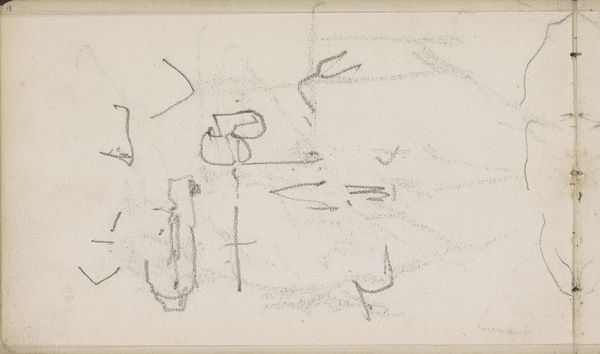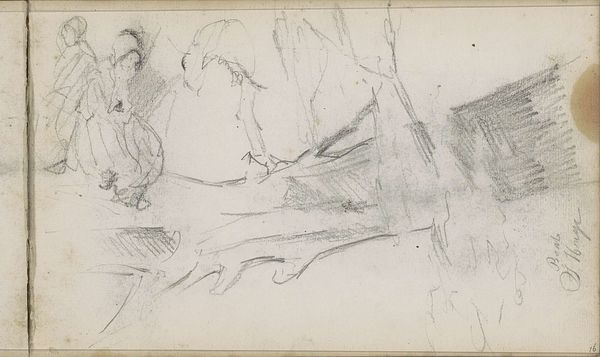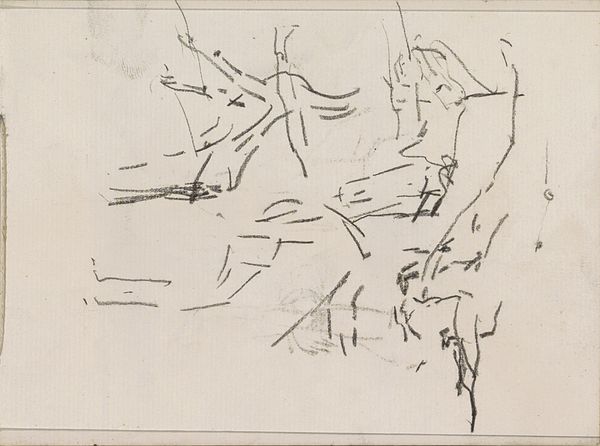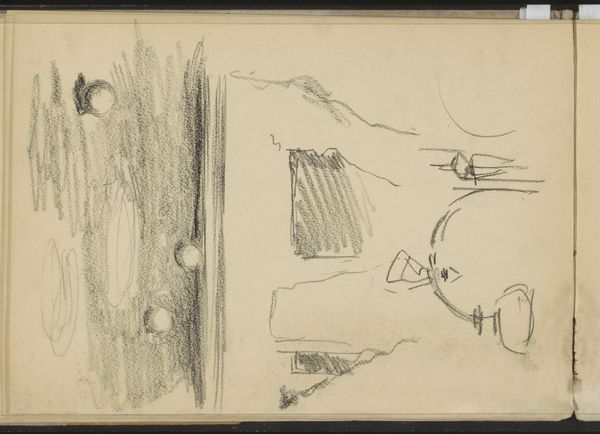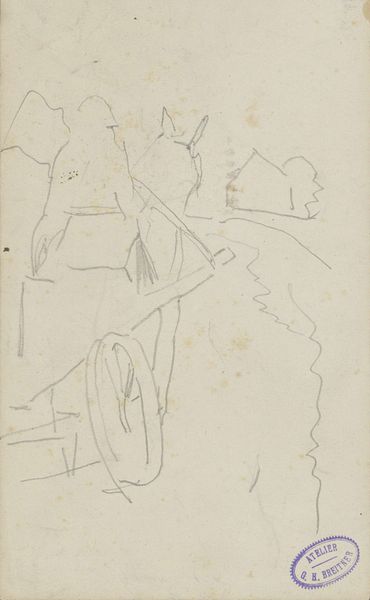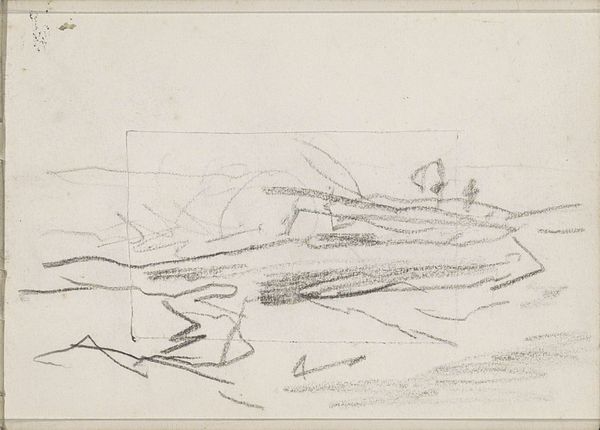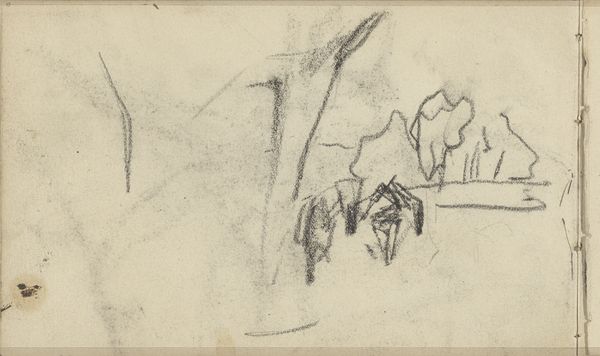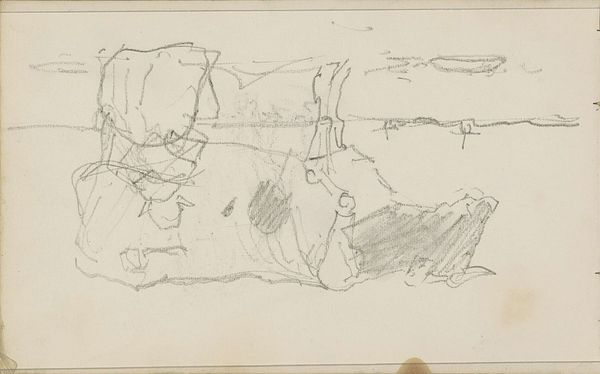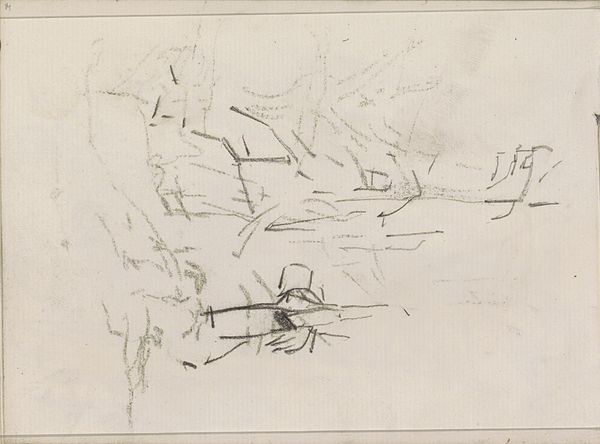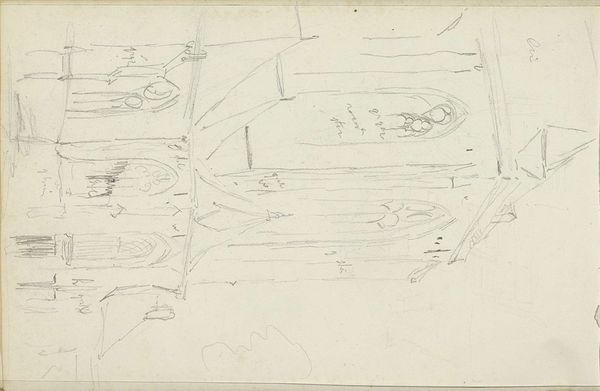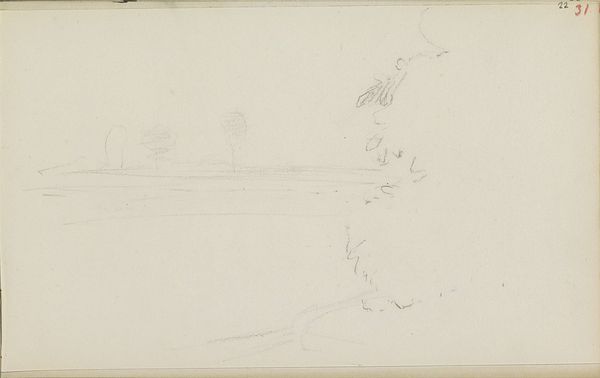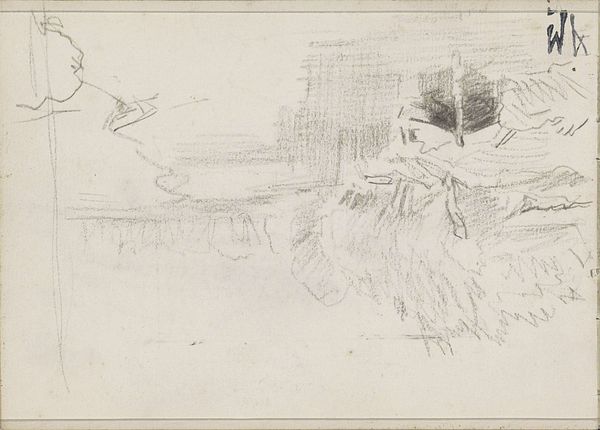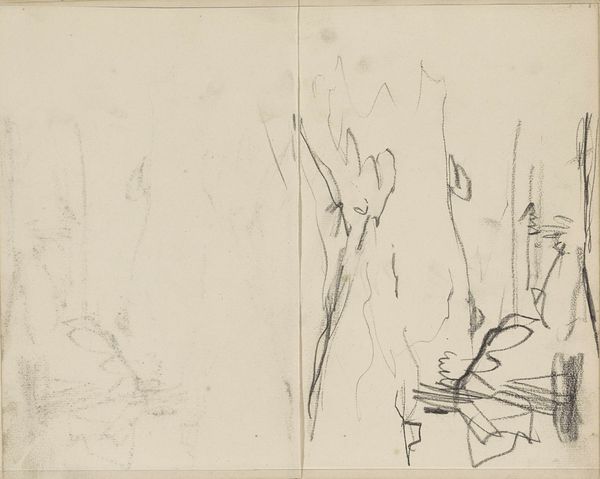
Copyright: Rijks Museum: Open Domain
Editor: Here we have Johan Antonie de Jonge's "Studie, mogelijk van een landschap," created sometime between 1881 and 1927. It's a pencil and frottage drawing on paper, and it strikes me as remarkably abstract, even unfinished. What do you see in this piece, considering it's described as a possible landscape study? Curator: The rawness of the materials immediately stands out. Pencil on paper; simple, readily available, cheap even. But look at the application! The frottage technique, typically a process of rubbing, democratizes the image-making process, doesn't it? It shifts the artist's role, making them less a creator *ex nihilo* and more a facilitator, capturing pre-existing textures. How might the social and economic status of the artist relate to their engagement with accessible, almost quotidian methods? Editor: That's fascinating. I hadn't thought about the socio-economic aspect of using frottage in particular. It seems to level the playing field somehow, making art more about observation than virtuosity. Curator: Precisely. Think about the Impressionists. Their rejection of academic painting conventions wasn’t just stylistic. It was tied to new materials—pre-mixed paints in tubes, portable easels—that allowed them to move beyond the studio and engage directly with the world, disrupting established artistic hierarchies in terms of who made art, how, and where. Does this drawing resonate with any of these ideas? Editor: Definitely. The sketch-like quality, the feeling of immediacy – it feels like de Jonge is engaging with the landscape directly, recording its textures and forms without pretense. Curator: Right, by focusing on process and materials, we can see the art production related to broader societal and economic factors. This shifts how we understand its meaning. Editor: I see your point, considering the implications behind simple techniques really enriches our perspective on art history. Curator: Indeed! Material analysis exposes overlooked dimensions. It’s a good reminder to think beyond just subject and aesthetics.
Comments
No comments
Be the first to comment and join the conversation on the ultimate creative platform.

